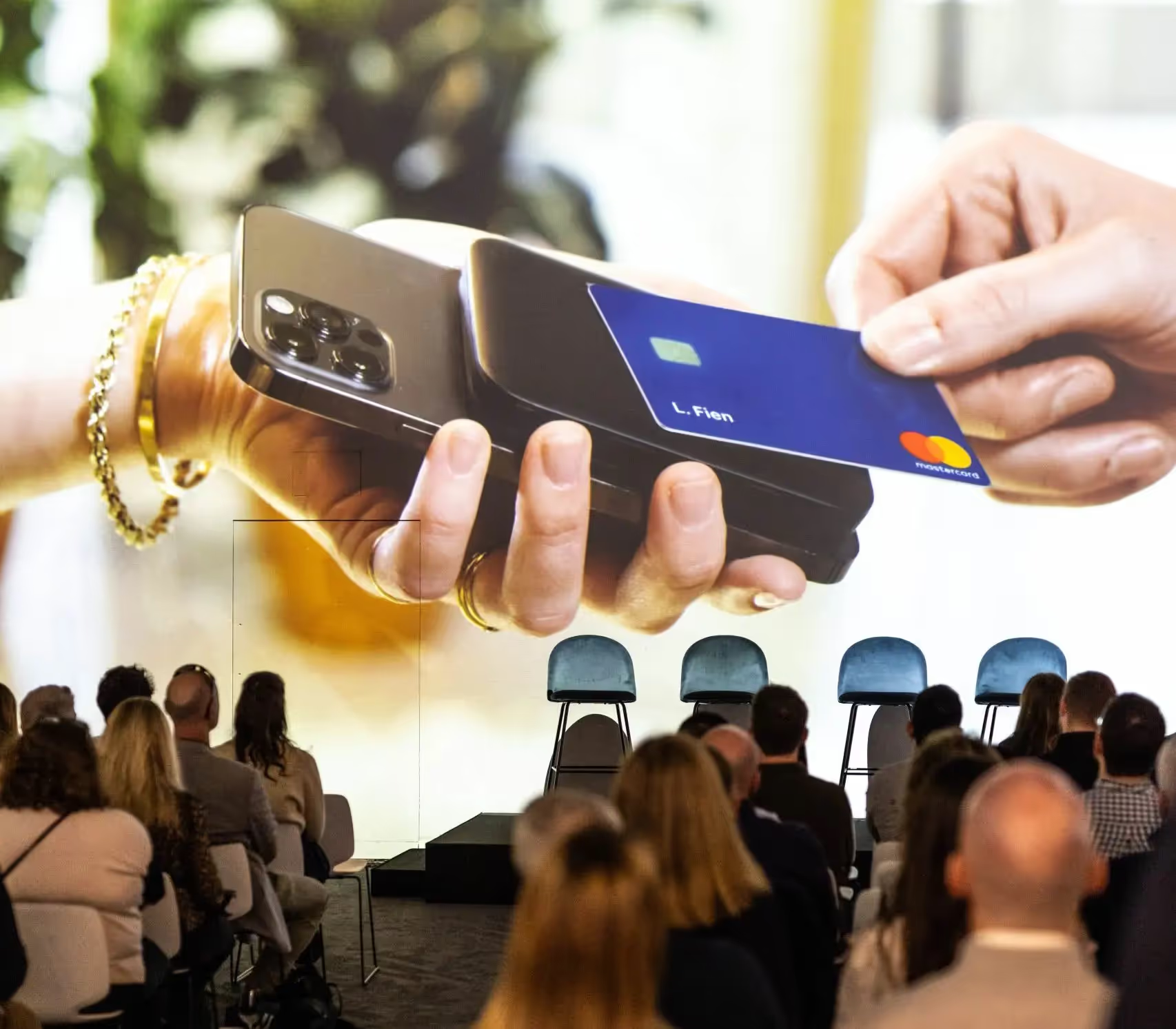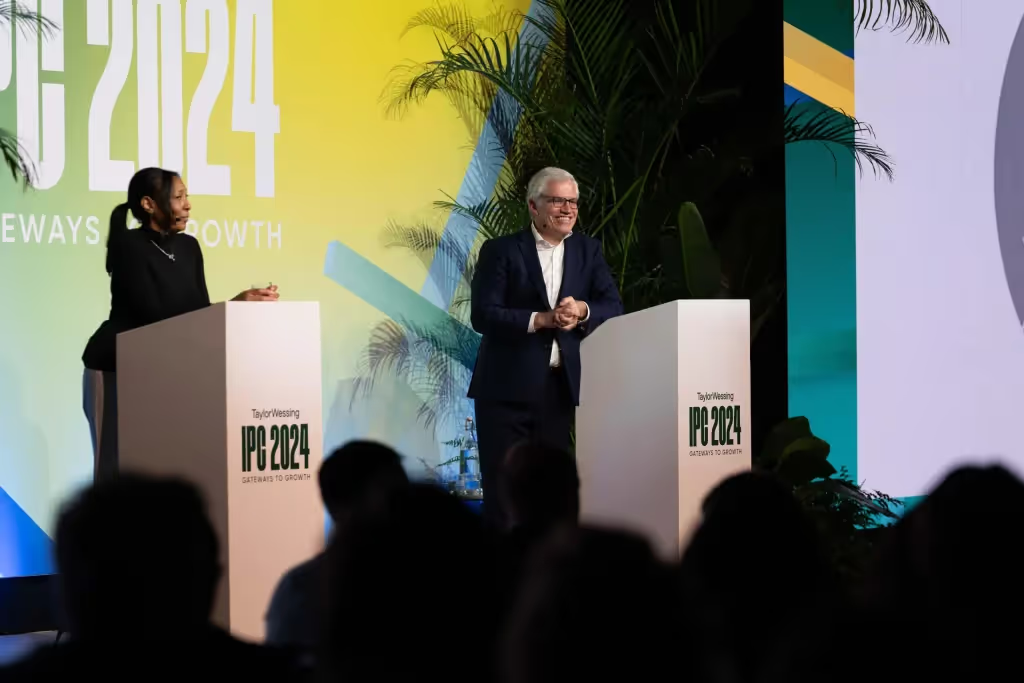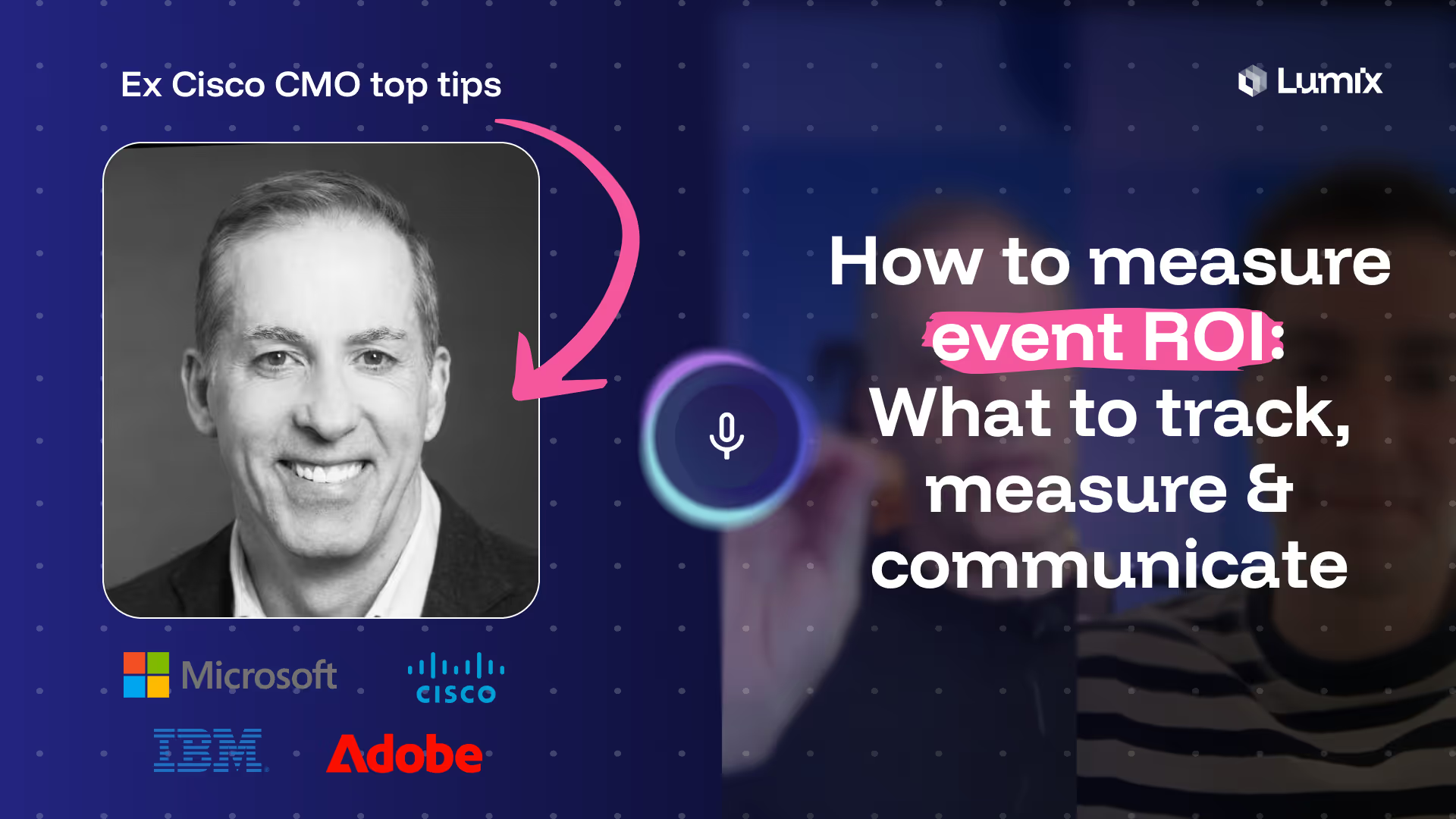How To Organise A Large Scale Conference

Weekly newsletter
Large scale conferences are making a significant comeback. According to the 2025 State of the Meetings Industry Planner Survey, medium-sized events (100–250 attendees) and larger events (500+ attendees) are capturing a growing share of the market.
We’re now seeing conferences like Web Summit, Elite Business Live, and GITEX Global set the pace. These events act as brand-defining platforms, driving the pipeline, boosting brand visibility, and creating commercial momentum that extends far beyond the event itself. That’s why more companies are investing in them as strategic growth channels.
But organising a large scale conference demands structure, speed, and serious operational muscle.
As attendee counts rise, so do the hurdles of supplier coordination, stakeholder alignment, budget pressure, risk management, and reporting. The Lumix team has seen these challenges firsthand, working with brands navigating the operational load that large scale delivery demands.
We’ve curated this guide to show what it really takes to plan and deliver a large scale conference, without burning out your team or your budget.

Start with Strategy
While setting goals may feel like a given, the way you define them has a direct impact on how smoothly your event runs and how effective it ends up being. High-performing teams don’t just decide to “build brand” or “generate leads.” They clarify what success really looks like and make sure the entire organisation is aligned before execution begins.
Begin by identifying your primary objective, the one thing your conference must deliver on. Then layer in secondary goals that support it without competing for attention.
Primary objectives might include:
- Generating qualified pipeline from key accounts
- Launching a new product to a targeted audience
- Strengthening partner relationships
- Driving press and analyst attention
Secondary goals could include:
- Increasing executive visibility or thought leadership
- Gathering customer feedback or case study content
- Supporting internal alignment across regions or teams
- Improving ESG or DEI credentials through inclusive formats
Once goals are clear, shift your focus to audience segmentation. Are you bringing in net-new buyers, current customers, investors, or your own teams? Each audience expects something different, and their presence should influence everything from your content strategy to how you design the physical space.
Finally, align early with your internal stakeholders. Set expectations upfront with Sales, Product, and Leadership teams so you’re not adjusting the scope halfway through. The earlier the alignment, the smoother the delivery.
Set a Budget That Matches Your Goals
Budgeting for a large scale conference requires a financial framework that reflects your goals, reduces risk, and sets you up to measure meaningful outcomes.
This year, 74% of marketers say their event budgets are increasing. But the data also shows that 21% anticipate flat budgets, and 5% are planning to cut spending altogether. This means there’s growing confidence in the value of events, but also growing scrutiny over what they return.
To avoid overages and underperformance, build your budget in a way that’s tied tightly to your objectives.
Start by mapping your core spend categories:
- Venue and AV production
- Speaker fees and travel
- Internal staffing and logistics
- Event tech (registration, engagement tools, analytics)
- Food, beverage, and hospitality
- Creative, signage, and print
- Post-event content, follow-up, and reporting
Divide these into fixed costs (like venue or platform) and variable costs (like catering, attendee gifts, or travel). This gives you the flexibility to adjust the scope based on real-time attendance and evolving priorities.
It’s also smart to plan for the unexpected. Setting aside a 10–15% contingency buffer gives your team breathing room to handle supplier delays, changing requirements, or late-stage add-ons. The more structured your budget, the easier it is to track in-flight spend, reduce waste, and report clearly on ROI when the conference ends.
Build a Timeline That Matches the Scale
Large conferences move fast, but only if your planning starts early. Venue booking, speaker onboarding, sponsor alignment, and supplier deadlines all need longer lead times than smaller formats.
A solid 6–12 month timeline gives room to manage high-impact tasks like AV design, tech integration, ESG approvals, and visa requirements. Prioritise milestones like registration go-live, supplier confirmations, and final production sign-off.
The tighter your timeline, the higher the risk. Map out what needs to happen when, and build in buffers for anything that can cause last-minute fire drills.
Source the Right Suppliers
When you're planning a large scale conference, supplier management becomes one of the most complex parts of the process. Most events of this size require between five and eight external vendors, covering everything from AV and staging to print, catering, security, and signage.
But sourcing these suppliers isn’t always strategic. Many teams fall into ad hoc approaches: manual RFPs, rushed referrals, limited visibility on spend, and disconnected payment terms. This not only introduces compliance risk, but it also drives up costs and slows down execution.
Top-performing teams handle supplier sourcing very differently. Instead of starting from scratch every time, they work with pre-vetted supplier networks, centralised contracts, and systems that give real-time visibility into budget, scope, and performance.
Lumix aims to bring critical structure to the sourcing process. Our curated supplier network is built for scale and rigorously vetted for performance, transparency, and ESG compliance. We've spent 15+ years working with leading vendors across the events industry, and we benchmark them so you can save time and focus on your event strategy.
With Lumix:
- Centralised payment covers all suppliers as we handle contracts, timelines, and payouts behind the scenes
- Real-time PO control ensures pricing changes and approvals are tracked clearly in one system
- Benchmarking shows where past event spending can be optimised through better supplier choices
- Supplier quality is guaranteed with every vendor rigorously vetted for performance and ESG compliance
Rather than relying on manual workflows or chasing vendors for updates, Lumix gives you a single source of truth and the best suppliers, managed through a system that’s built for modern procurement and event teams.
Structure Your Internal Team and Align Stakeholders
No matter the size of your conference, success hinges on how well your internal team is structured and each department is aligned from the start.
Start by defining clear roles. For most large-scale events, you’ll need a dedicated operations lead, a logistics manager, a content director, a comms lead, and someone focused purely on supplier management. For smaller teams, these roles may overlap, but clarity on ownership is key to preventing crossed wires later on.
Scale your structure to match event size:
- For 500 attendees, a lean team with clearly defined dual roles can work.
- For 1,000+, you’ll want role separation with a project manager ensuring alignment.
- At 5,000+, you’ll likely need a formalised event function, external support, and workflows mapped from brief to wrap-up.
Decide early what stays in-house and what to delegate. Trying to own everything internally is one of the fastest ways to burn out a team. Focus your internal effort where strategic value is highest: brand, content, and audience experience. Delegate repetitive or time-intensive operational tasks like supplier sourcing, contracting, or logistics.
A structured internal setup aligned with shared goals improves how the event runs and reduces internal noise, accelerates decision-making, and makes the outcomes easier to report, prove, and scale.
Manage Risk and Hidden Costs Before They Show Up
Big conferences come with big expectations and just as often, big surprises. Hidden costs can creep in fast, especially when timelines tighten and decisions get rushed. Without a clear handle on risk, the final invoice can look very different from the original budget.
Here are five hidden costs that catch even experienced teams off guard:
- Last-minute AV spec changes or tech upgrades
- Venue overtime charges for delayed pack-down or extended rehearsals
- Catering overages due to underestimated attendee numbers
- Agency service fees not included in initial scopes
- Supplier markups or scope creep without clear tracking
To avoid surprises, build risk control into your process from the start:
- Set caps in supplier contracts to lock in pricing and protect against unchecked overages.
- Track buffers actively, not passively. A 10–15% contingency fund only works if it’s monitored and updated as decisions are made.
- Centralise approvals so that scope changes or cost uplifts don’t slip through unnoticed.
Measure Success Like a Boardroom Would
Once the event wraps, the real scrutiny begins, and it’s coming from the top. Senior leadership doesn’t want a highlight reel of packed sessions or social media buzz. They want to know: Did this event drive measurable business value?
That means moving beyond vanity metrics and building a performance model that reflects the full commercial impact of your event.
Here’s how top teams measure ROI with board-level clarity:
- Map every spend line to an outcome. If you spent £50K on a keynote speaker, what did it influence?
- Track revenue-related metrics. Cost per lead, cost per scheduled meeting, revenue influenced, customer retention uplift. These are the numbers that drive future investment.
- Capture long-tail results. Not all ROI shows up in the first 30 days. Track impact across your sales funnel, customer lifetime value, and brand equity indicators.
- Use pre-built reporting templates. Build your reporting framework before the event, so you’re not scrambling post-show to pull data from different sources.
Check our full guide on measuring event ROI to see how high-performing teams report and win buy-in for the next big activation.
Planning Process Pitfalls
- Venue and logistics missteps often prove costly. Underestimating space needs for networking areas, inadequate WiFi capacity for hundreds of simultaneous users, poor acoustics in breakout rooms, and insufficient power outlets can derail even well-planned content. Transportation and parking logistics frequently get overlooked until the last minute.
- Technology failures represent another major risk category. Assuming venue AV equipment will work flawlessly, not having backup plans for streaming or recording, incompatible presentation formats, and inadequate tech support staffing can create chaos during critical moments.
- Speaker and content management requires careful orchestration. Overcommitting speakers without proper backup plans, unclear expectations about presentation requirements, poor session flow planning, and inadequate time buffers between sessions can create scheduling nightmares.
- Financial oversights include underestimating hidden costs (setup fees, overtime charges, cancellation penalties), poor cash flow management, inadequate contingency budgets, and unclear payment terms with vendors.
- Communication breakdowns frequently occur when there's unclear role definition among team members, insufficient vendor coordination, poor information flow to attendees, and lack of clear escalation procedures for problems.
Evaluation Process Pitfalls
- Measurement myopia happens when organizers focus solely on easily quantifiable metrics like attendance numbers while missing qualitative outcomes like relationship building, knowledge transfer effectiveness, or long-term community impact.
- Feedback collection failures include survey fatigue from overly long questionnaires, timing surveys poorly (too soon or too late), asking leading questions, and failing to gather input from all stakeholder groups including vendors and staff.
- Data interpretation errors often stem from confusing correlation with causation, ignoring selection bias in who responds to surveys, comparing metrics across different conference formats, and drawing conclusions from insufficient sample sizes.
- Organizational blind spots emerge when internal teams avoid honest self-assessment, external feedback gets filtered through rose-colored glasses, and there's reluctance to acknowledge what didn't work well.
- Follow-through deficiencies represent perhaps the biggest evaluation pitfall - collecting extensive feedback but failing to analyze it systematically, not documenting lessons learned for future events, and missing opportunities to maintain momentum with attendees post-conference.
- The most successful conference organizers I've observed treat both planning and evaluation as iterative processes, building in regular check-points and adjustment opportunities rather than treating them as linear, one-time activities.
The Bottom Line
Organising a large scale conference demands clear planning, smart coordination, and the ability to manage pressure across suppliers, stakeholders, and timelines. Every decision, from early strategy and supplier selection to cost tracking and ROI reporting, shapes the outcome.
Lumix helps make that process easier. With trusted suppliers, centralised payments, and full cost visibility, we give marketing and event teams the tools to stay in control and deliver results with confidence.
Talk to the Lumix team to see how we can support your next big move.
Lumix Blogs
Get the indise scoop: the latest tips, tricks, & product updates

In House Vs Agency. Which Should You Choose To Manage Events
Compare in house vs agency event management models. Understand the trade-offs in cost, control, ROI and explore where a hybrid approach fits best.

Proving Event ROI: How to Speak Finance’s Language with Insights from Mark Phibbs, ex-Adobe & Cisco CMO
“ROI isn’t just about counting heads at a booth, it’s about understanding how events accelerate pipeline, loyalty and revenue.”
Frequently Asked Question
Have another question? Please contact our team!
Yes. The platform provides side-by-side quote comparisons that show what’s included (and what isn’t) in each proposal. You’ll see cost breakdowns, supplier notes, and Lumix’s benchmarked pricing insights all designed to help you make confident, data-driven decisions.
Yes. You can upload and store your existing brief templates, or use Lumix’s AI-assisted builder to generate new ones. The platform also learns from your past events, so future briefs can be created faster with pre-filled details and preferred suppliers.
Absolutely. Lumix is built for flexibility. You can update or amend briefs at any time through quote revisions. When you make changes, suppliers are automatically notified and can adjust their quotes accordingly, keeping everything transparent and version-controlled.
A Lumix-vetted supplier has been verified for legal identity, financial health, insurance, certifications, and recent performance. We don’t just check paperwork once — we continuously monitor suppliers’ live performance on the platform to ensure they meet professional, safety, and compliance standards.
Our vetting process happens in three levels: Verified: Baseline identity and compliance checks, legal registration, sanctions screening, insurance, and minimum financial health scores. Certified: Category-specific evidence such as food-hygiene, rigging, or data-security certifications, depending on the supplier’s role. Audited: For high-value or critical suppliers, we add deeper due diligence including third-party audits, ESG assessment, and verified delivery KPIs on Lumix.
Yes. We align our vetting standards with leading UK and global frameworks such as Achilles, Hellios FSQS/JOSCAR, Avetta, SafeContractor, and EcoVadis. Where appropriate, Lumix integrates or recognises these certifications within our supplier profiles to avoid duplicate checks.

